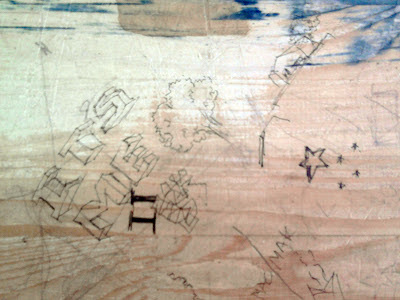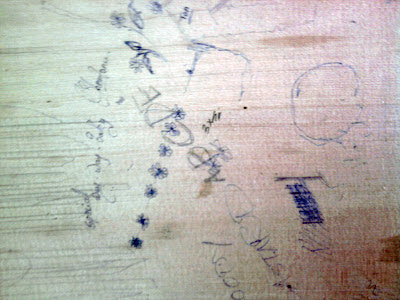The entry of Punde was the biggest stir in the history of AOA. I think it could have been the Golden Era of AOA. Infact it was a golden period for one year - only if the students realized the true potential of the reforms Punde envisioned for the school. Punde sir came with a heavy professional mood to AOA and was extremely upset about the loose ways in which administrative affairs were handled in the school. I have listed a big post on the reforms that Mr. Punde tried to bring. But if I was to enlist what I learnt from him, it should be the realization of the potential change professional experience can bring in academic space. Academicians and academic spaces are lousy - at least in our context. I realized how this new principal saw everything in terms of profit and loss - not of money but of values. It was an interesting way to read the success of the college. He was the first one to embrace the fact that Academy was NOT the best college in the country. I liked the way in which he made deals for bringing the best infrastructure to college. He called for quotations, evaluated them against each other, negotiated with agencies - a knowledge that only a seasoned professional could get into academia. Thus, I learnt from him ways in which large systems are to be installed in large setups. It was amazing to learn how he understood demographics of space usage in the building, and rework strategies.
Mr. Punde was such an energetic man that I could hardly cope up with him. Although he included me in the core group for formulation of new agendas and course for the college. He was so intense that later, I stopped attending meetings, because I could simply not see where all of it was going...Although he was very transparent, he maintained certain issues only to himself. It seemed he was holding a huge storm...I think unless I had a professional setup, I would not get the robustness that he had. That is required for an institution like ours.
Thus it was under him that I was appointed as a member of the Library Committee. In the first round, after a lot of struggle, we were able to order for the most up to date books for our library. Some of the most urgent books on theory were ordered for the students. I strove hard to get the books organized - in their right cupboards. I took a separate initiative to get back all the lost dissertations in the library. I prepared a letter, addressed to the alumni, got their addresses from the official records. The librarian, whose responsibility should have been to follow up with this never took any initiative. The library / librarian politics of our college is phenomenal. However, on the other hand, I got key reference books digitized - something that every library should be heavily investing in.
Inspite of all my efforts, the library remains unchanged. It will be ironical to reveal that my own dissertation remains invisible at the library.
I tried hard to bring some graphic design changes to the way in which attendance sheets, marking sheets etc are prepared in our school. We changed from legal size A4 paper to A4. I struggled to change portrait format to landscape so that students get more horizontal space to sign. I insisted on using Arial instead of Times New Roman. The normal font size was reduced to 10 from 12. Time tables of all years were compiled on one single A3 sheet for comparative study and printing (instead of separate A4s). Blaring big stickers on registers, files and cupboards were replaced by small font labels. There are countless such changes which go overlooked. I can not recount them myself. I was just pained to see no sense of design in a design school.
Bureaucratic officials do not understand the importance of graphic design. They do not have the intellect to think about such issues. And when there is systemic hierarchy, it is even more difficult to establish new changes. I think above changes will be lost to the older version soon, over time, if no one is conscientious enough about it, or does not monitor it.
I was coordinating with numerous other people over the year for competitions, study tours and other such peripheral issues. There were hardly people who helped, or were interested in all such activities of the college.
proceed to part 4
----
Links to thread
part 1
part 2
part 4
Mr. Punde was such an energetic man that I could hardly cope up with him. Although he included me in the core group for formulation of new agendas and course for the college. He was so intense that later, I stopped attending meetings, because I could simply not see where all of it was going...Although he was very transparent, he maintained certain issues only to himself. It seemed he was holding a huge storm...I think unless I had a professional setup, I would not get the robustness that he had. That is required for an institution like ours.
Thus it was under him that I was appointed as a member of the Library Committee. In the first round, after a lot of struggle, we were able to order for the most up to date books for our library. Some of the most urgent books on theory were ordered for the students. I strove hard to get the books organized - in their right cupboards. I took a separate initiative to get back all the lost dissertations in the library. I prepared a letter, addressed to the alumni, got their addresses from the official records. The librarian, whose responsibility should have been to follow up with this never took any initiative. The library / librarian politics of our college is phenomenal. However, on the other hand, I got key reference books digitized - something that every library should be heavily investing in.
Inspite of all my efforts, the library remains unchanged. It will be ironical to reveal that my own dissertation remains invisible at the library.
I tried hard to bring some graphic design changes to the way in which attendance sheets, marking sheets etc are prepared in our school. We changed from legal size A4 paper to A4. I struggled to change portrait format to landscape so that students get more horizontal space to sign. I insisted on using Arial instead of Times New Roman. The normal font size was reduced to 10 from 12. Time tables of all years were compiled on one single A3 sheet for comparative study and printing (instead of separate A4s). Blaring big stickers on registers, files and cupboards were replaced by small font labels. There are countless such changes which go overlooked. I can not recount them myself. I was just pained to see no sense of design in a design school.
Bureaucratic officials do not understand the importance of graphic design. They do not have the intellect to think about such issues. And when there is systemic hierarchy, it is even more difficult to establish new changes. I think above changes will be lost to the older version soon, over time, if no one is conscientious enough about it, or does not monitor it.
I was coordinating with numerous other people over the year for competitions, study tours and other such peripheral issues. There were hardly people who helped, or were interested in all such activities of the college.
proceed to part 4
----
Links to thread
part 1
part 2
part 4















